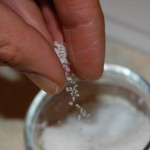Scorpion Stings: Dangers and Treatment Options

Scorpions are generally assumed to be present in the desert Southwest and California. However, various species exist throughout the United States. While the majority of them thrive in hot climates, they have adapted and can be found in northern parts of the country as well. Fortunately, most species are not a danger to humans, other than producing a painful sting. However, there are a couple of species that are poisonous, and being bitten can lead to death if prompt medical attention is not obtained.
All Scorpions are Venomous
Scorpions use the venom in their tails to disrupt the nervous systems of their prey. This assists in immobilizing the prey and reduces their effectiveness when it comes to fighting back. However, scorpions do not eat their prey afterwards. In most cases, they introduce an acidic compound that literally dissolves the prey into a sludge that a scorpion will suck up and ingest.
Scorpions tend to feed on insects, spiders and other scorpions. However, bigger scorpions can easily catch small reptiles or mice. They are predatory hunters who spend a lot of time stalking prey before pouncing in a lightning-fast motion that catches victims off-guard. However, when it comes to humans and pets, they generally avoid striking unless they feel threatened.
Two species of scorpions in the United States have a venom that is highly-toxic to humans, the bark and striped-tail. The bark is by far the most fearsome and toxic. Both species are light brown in color and can grow more than eight inches long when they mature. The good news is that they are nocturnal hunters and incredibly sensitive to light and noise. This is one of the reasons that they are not as abundant in populated areas. However, it is not uncommon to find them in homes or garages, particularly in places where boxes, nooks and crannies provide shelter.
Getting Stung
Scorpions can sting more than once since their stinger does not usually detach from their body. This repeated injection of venom into the body is what poses the greatest risk to humans. Children are particularly susceptible to the toxins from a scorpion bite due to their small size. The venom enters the bloodstream and targets the nervous system.
Symptoms of severe reactions to stings include numbness in different parts of the body, even far away from the bite site, difficulty swallowing and blurred vision. Uncontrolled eye movements, seizures, drooling and difficulty breathing are also commonplace. Left untreated, the a victim who has a severe reaction can go into respiratory or cardiac arrest or suffer permanent neurological damage.
Fortunately, most stings will not produce these symptoms. However, they can be extremely painful, especially from the bark of striped-tail scorpion. Stings that come from other species tend to feel and resemble those of bees, wasps or hornets. Localized swelling, pain and discomfort and redness can be present for a day or two, but they generally subside as the venom is either neutralized or removed from the body through normal biological processes.
Treating Stings
Recommended treatments for normal stings involves washing the affected area with soapy water as soon as the bite is noticed. Give the victim acetaminophen tablets every 4-8 hours to help with pain. It is not recommended that you give ibuprofen as this can worsen symptoms and cause other problems. Applying cold compresses or ice to the affected areas can help to reduce swelling. Apply the cold over the bite area for 10 minutes, remove for 10 minutes and repeat a few times.
Do not lance the bite area or apply suction in an attempt to remove the venom. This doesn’t work, and doing so can lead to the wound becoming infected. Furthermore, you can make the pain and extent of the injury more severe by these steps. Monitor the victim for signs of serious reactions such as those listed above, and seek out emergency medical attention as soon as possible if they develop.
Take time to learn more about scorpion habitats in areas that you may find yourself in during a survival situation, hiking or camping. The more you can do to avoid encroaching on their territory or accidentally threatening them will significantly reduce the chances of getting stung.
















